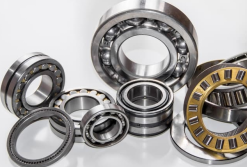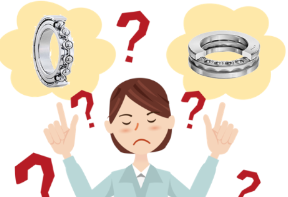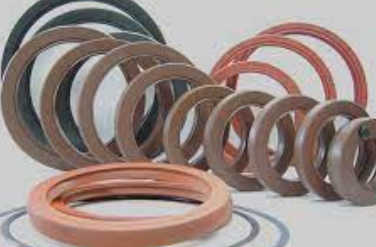7 steps to how to select bearing
Learn the essential 7 steps to selecting the right bearing for your application with our comprehensive guide.
From understanding load and speed requirements to considering materials and lubrication, this step-by-step tutorial will equip you with the knowledge you need to make an informed decision.
Are you struggling with choosing the right bearing for your application?
With so many options available, it can be a daunting task to select the ideal bearing that can handle your specific load, speed, and environmental conditions.
Fear not, as we have put together a comprehensive guide that breaks down the process into 7 easy-to-follow steps.
Whether you are a mechanical engineer or a DIY enthusiast, our guide will equip you with the knowledge to make an informed decision and ensure optimal performance.
So, let's dive into the 7 steps to selecting the perfect bearing for your application.
7 steps to do bearing selection:
1.Determine the Bearing application requirements
2.Choose the bearing type
3.Consider bearing materials
4.Calculate the required size of bearing
5.Lubrication requirements
6.Seal and shield options
7.Final selection and ordering
By the end of this guide, you will have a clear understanding of the essential steps to selecting the right bearing for your application, ensuring optimal performance and longevity
. So, let's get started and master the art of bearing selection.
Importance of bearing selection
Bearing selection is crucial in ensuring the reliable and efficient operation of mechanical systems.
Bearings are an integral part of most machines and are responsible for supporting rotating shafts, reducing friction, and facilitating smooth and precise motion.
Choosing the wrong bearing or using an improperly sized or installed bearing can result in a range of issues,
including premature failure, decreased efficiency, increased maintenance costs, and even safety hazards.
Proper bearing selection involves considering a variety of factors, including load, speed, temperature, and environmental conditions.
Choosing the right bearing type, size, material, and lubrication method can help ensure that the bearing can handle the specific application requirements and operate optimally under the given conditions.
By selecting the right bearing, machine designers, maintenance personnel,
and end-users can avoid costly downtime and repairs, extend the life of their equipment,
and improve overall performance and productivity.
Therefore, investing time and effort in bearing selection can save significant time, money,
and resources in the long run, making it a critical aspect of mechanical design and maintenance.
7 Steps to do Bearing Selection

Determine the Bearing application requirements
To determine the bearing application requirements, you need to consider several factors,
including the machine's operating conditions, load, speed, and environmental factors.
Here are some steps you can take to determine the bearing application requirements:
1.Identify the machine's operating conditions: Consider the type of machine, its function,
and the conditions under which it operates, such as temperature, humidity, and vibration levels.
2.Determine the load requirements: Determine the maximum and minimum loads the bearing will be subjected to,
as well as any shock or impact loads that may occur during operation.
3.Calculate the speed requirements: Calculate the rotational speed of the bearing based on the machine's operating speed and the bearing's size and type.
4.Consider the environmental factors: Determine whether the bearing will be exposed to any contaminants,
such as dust, dirt, or chemicals, and consider the impact of these factors on bearing performance.
5.Evaluate the space and mounting requirements: Determine the available space for the bearing,
as well as the mounting arrangement and method.
6.Analyze the application requirements: Analyze the collected data to determine the bearing type, size,
material, and lubrication method that will best suit the application requirements.
7.Consult with a bearing expert: If you are unsure about any aspect of bearing selection,
it is best to consult with a bearing expert who can provide you with guidance and advice on selecting the right bearing for your application.
Choose the bearing type

Choosing the right bearing type is critical to ensuring optimal performance and longevity of the machine.
The type of bearing you choose will depend on various factors, including the load, speed, and application requirements.
Here are some steps to help you choose the right bearing type:
1.Identify the load requirements: Determine the direction and magnitude of the load that the bearing will be subjected to.
There are two types of loads - radial loads and axial loads, and different bearing types are designed to handle different types of loads.
2.Determine the speed requirements: Consider the rotational speed of the bearing and choose a bearing type that can handle the required speed range.
3.Consider the environmental conditions: Evaluate the environmental factors that may impact the bearing, such as temperature, humidity,
and exposure to contaminants, and choose a bearing type that can operate effectively under these conditions.
4.Evaluate the application requirements: Analyze the machine's function, available space, and mounting requirements to determine the most suitable bearing type.
5.Consult with a bearing expert: If you are unsure about the appropriate bearing type,
it is always best to consult with a bearing expert who can provide you with guidance and advice on selecting the right type of bearing for your application.
Consider bearing materials

The choice of bearing material is essential in ensuring the longevity and optimal performance of a bearing.
Different materials have different properties, which can affect the bearing's ability to handle loads, resist wear, and perform effectively under different environmental conditions.
Here are some reasons why it is important to consider the bearing materials:
1.Load handling capacity: Different bearing materials have different load handling capacities,
and choosing the right material can ensure that the bearing can handle the maximum and minimum loads that it will be subjected to.
2.Wear resistance: Bearings are subjected to constant friction and wear,
and choosing the right material can ensure that the bearing has excellent wear resistance and long service life.
3.Corrosion resistance: Bearings can be exposed to different environmental factors, including moisture,
chemicals, and dust, which can cause corrosion and damage to the bearing.
Choosing the right material can ensure that the bearing is corrosion-resistant and can operate effectively under these conditions.
4.Temperature resistance: Different bearing materials have different temperature resistance levels,
and choosing the right material can ensure that the bearing can operate effectively under the given temperature range.
5.Lubrication compatibility: Different bearing materials may require different types of lubricants,
and choosing the right material can ensure that the bearing is compatible with the appropriate lubrication method.
6.Cost-effectiveness: Choosing the right bearing material can also ensure that the bearing is cost-effective over its service life,
reducing the need for frequent replacements and repairs.
Calculate the required size of bearing
Calculating the required size of a bearing involves considering the load and speed requirements of the machine and selecting a bearing that can handle these requirements.
Here are some steps to help you calculate the required size of a bearing:
1.Determine the load requirements: Calculate the maximum and minimum loads the bearing will be subjected to, a
s well as any shock or impact loads that may occur during operation.
2.Identify the bearing type: Choose the appropriate bearing type that can handle the required load capacity and direction.
3.Calculate the speed requirements: Determine the rotational speed of the bearing based on the machine's operating speed and the bearing's size and type.
4.Calculate the dynamic load rating (C): The dynamic load rating (C) is the maximum load that a bearing can handle under ideal operating conditions.
Calculate the dynamic load rating based on the load requirements and the bearing type.
5.Calculate the equivalent radial load (P): If the bearing is subjected to both radial and axial loads,
calculate the equivalent radial load (P) based on the magnitude and direction of the loads.
6.Calculate the required bearing size: Use the formula d=(C/P)^1/3 to calculate the required size of the bearing, where d is the bearing's bore diameter.
7.Select the appropriate bearing size: Select a bearing with a bore diameter that is equal to or slightly larger than the calculated value.
Lubrication requirements
Identifying the lubrication requirements for a bearing is crucial in ensuring its proper operation and longevity.
Here are the steps to identify the lubrication requirements:
1.Determine the bearing type and size: Different bearing types and sizes require different types and amounts of lubrication.
Consult the manufacturer's specifications to identify the appropriate lubrication requirements for the bearing.
2.Consider the load and speed requirements: The load and speed requirements can impact the amount and type of lubricant needed.
Higher loads and speeds generally require more lubrication and may need a higher viscosity lubricant.
3.Evaluate the operating temperature and environmental conditions:
The operating temperature and environmental conditions can affect the lubricant's performance and durability.
Consider the temperature range, humidity levels, and exposure to contaminants such as dirt or chemicals.
4.Determine the lubricant compatibility: Different types of bearings may require different types of lubricants, such as grease or oil.
Ensure that the lubricant is compatible with the bearing material and other materials used in the machine.
5.Select the lubrication method and frequency: Choose the appropriate lubrication method,
such as manual or automatic, and determine the frequency of lubrication based on the bearing's operating conditions.
6.Consider sealing requirements: Sealing the bearing can help prevent contamination and retain lubricant,
which can improve the bearing's performance and longevity. Determine the appropriate sealing requirements for the bearing.
Seal and shield options
Bearings can be equipped with different types of seals and shields to protect the bearing from contaminants and retain lubrication.
Here are the common seal and shield options for bearings:
1.Open Bearings: Open bearings have no seals or shields, and are used in applications where contamination is not a concern.
They allow for maximum lubrication flow, but can also result in increased wear and reduced lifespan due to contamination.
2.Contact Seals: Contact seals come in various designs, including single-lip, double-lip, and triple-lip seals.
These seals make contact with the bearing inner or outer ring and prevent contaminants from entering the bearing.
However, they can cause increased friction and heat generation, and may also limit the lubricant flow to the bearing.
3.Non-Contact Seals: Non-contact seals, such as labyrinth seals and low-friction seals,
are designed to prevent contamination without making contact with the bearing.
They provide low-friction operation and do not generate heat, but may not provide as effective a barrier against contamination as contact seals.
4.Shields: Shields are metal plates that cover the bearing and prevent contaminants from entering.
They provide a higher level of protection than open bearings but may not be as effective as seals in preventing contamination.
5.Combination Seals/Shields: Combination seals/shields offer the benefits of both seals and shields,
providing a high level of protection against contamination while allowing for adequate lubrication flow.
Final selection and ordering
After considering all the factors, including the load and speed requirements, bearing type and size, lubrication requirements,
and seal and shield options, you are ready to make your final selection and order the bearings.
Here are some steps to help you with the final selection and ordering process:
1.Determine the bearing specifications: Based on the application requirements and calculations,
determine the appropriate bearing type, size, and material.
2.Choose the appropriate seal and shield options: Select the seal and shield options that will provide the necessary protection against contamination and retain lubrication.
3.Determine the lubrication requirements: Choose the appropriate lubrication method, frequency, and type.
4.Verify availability and pricing: Check the availability and pricing of the selected bearings from reputable suppliers and manufacturers.
5.Place your order: Place your order with the supplier or manufacturer, providing all the necessary specifications and requirements.
6.Receive and inspect the bearings: Once you receive the bearings, inspect them for any damage or defects.
7.Install and test the bearings: Install the bearings according to the manufacturer's specifications and test them for proper operation.
Conclusion
In conclusion, selecting the right bearing for your application involves a comprehensive process that takes into consideration various factors,
including load and speed requirements, bearing type and size, lubrication requirements, and seal and shield options.
By following the 7 steps outlined in this guide, you can simplify the bearing selection process and ensure that you choose the appropriate bearing for your application.
Remember, selecting the right bearing is crucial to ensuring the reliable and efficient operation of your machine, reducing the risk of premature failure, and improving productivity and safety.





